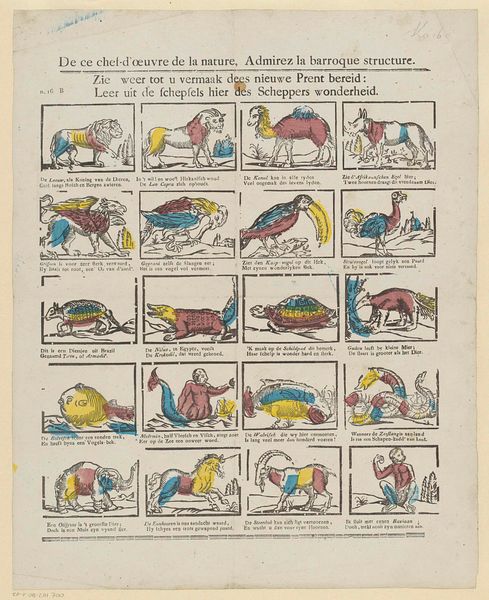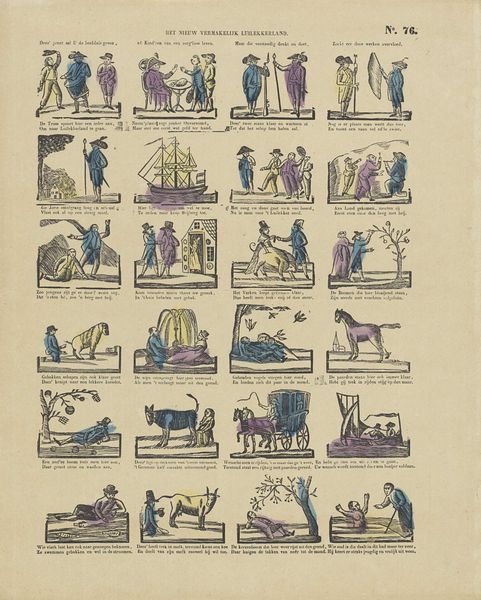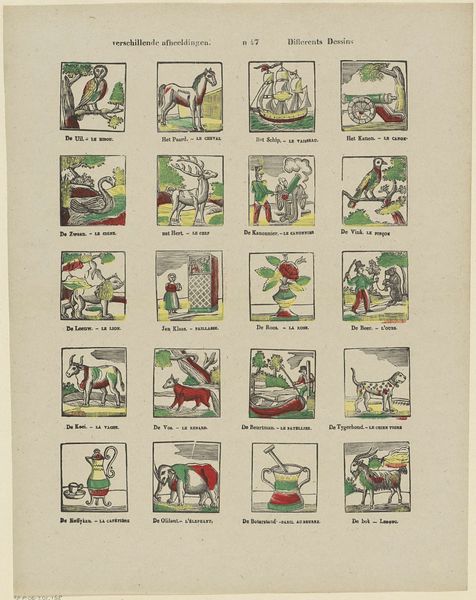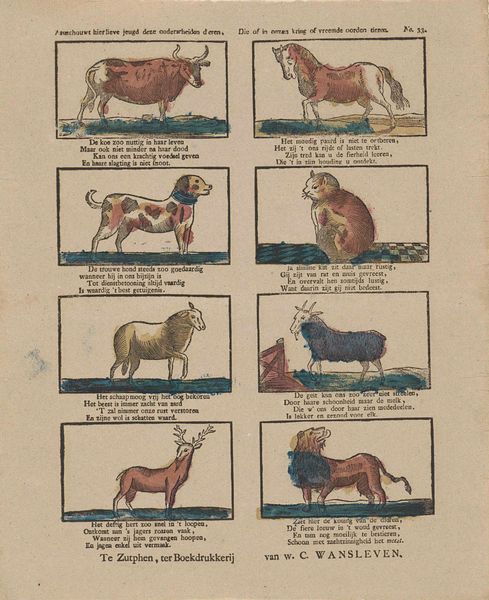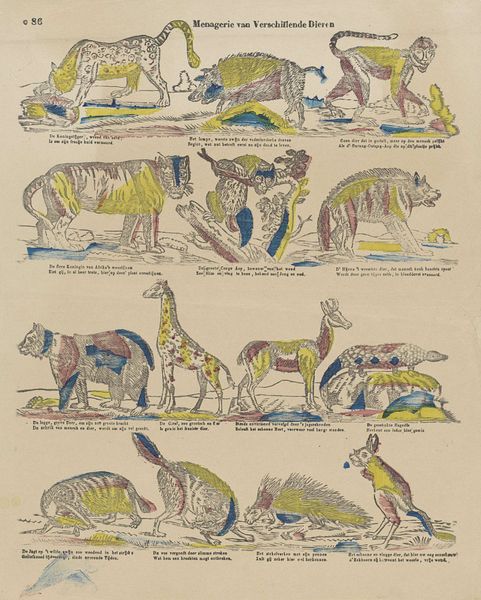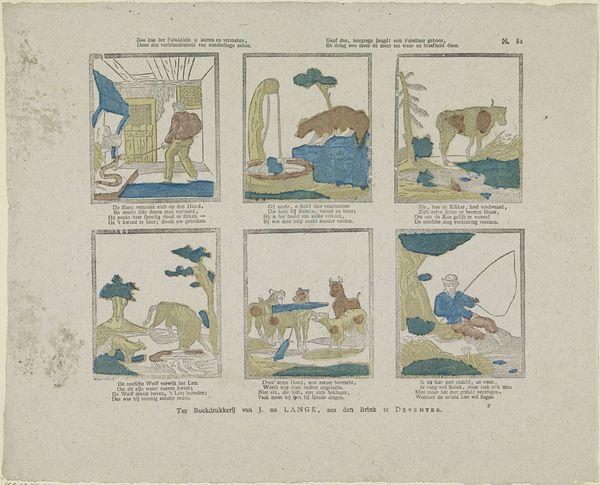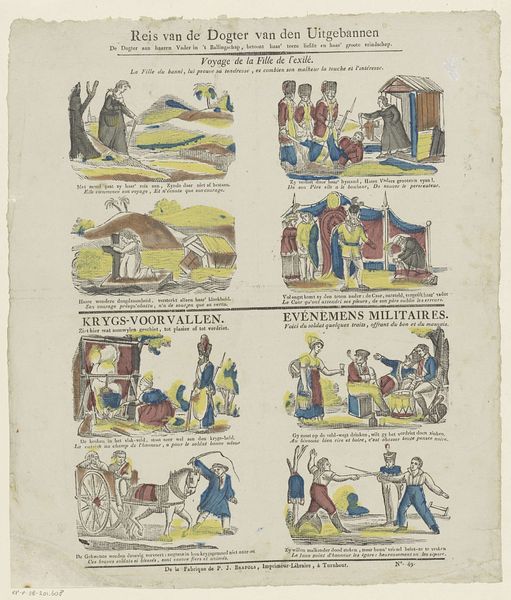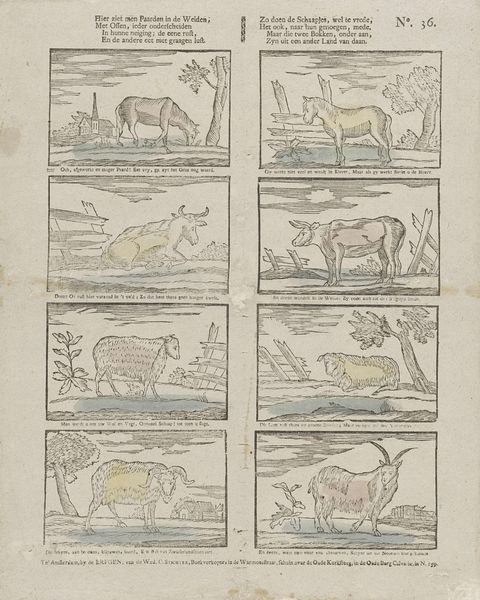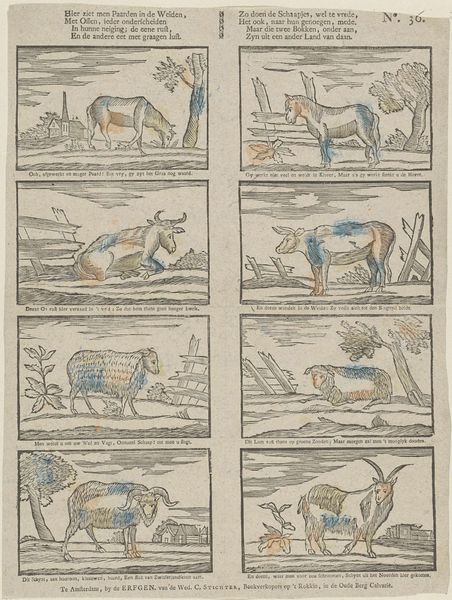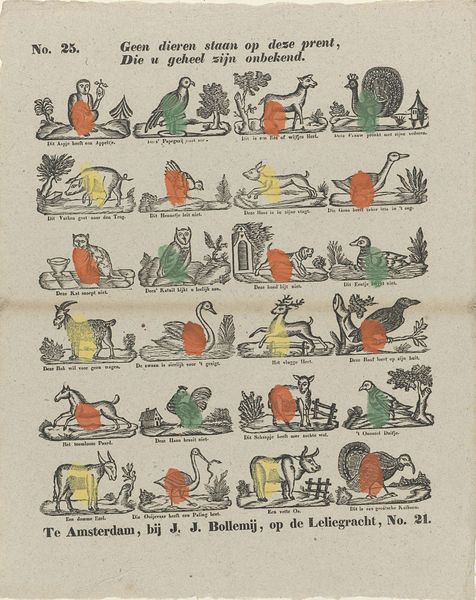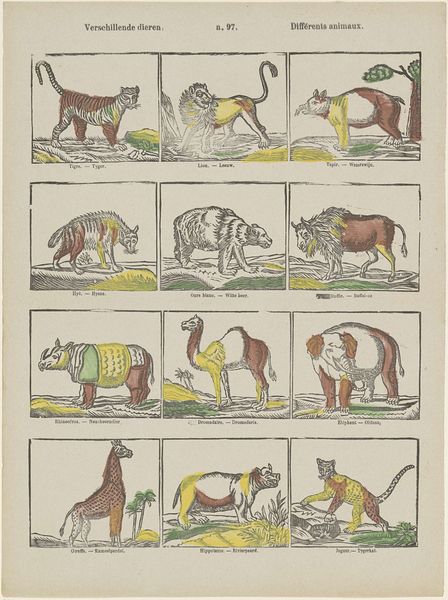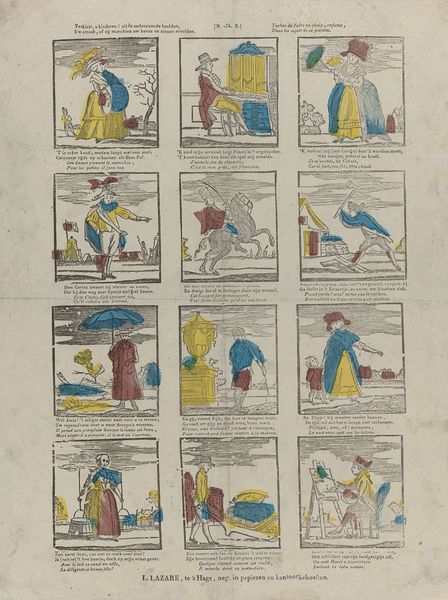
Deez, dieren, toonen zich als levend voor uw' oogen, / Elk soort naar zijnen aard, bestemming en vermogen; / Opdat ge, o lieve jeugd! leer' kennen, dat uw' staat / Als mensch, het nuttigst dier nog ver te bovengaat 1827 - 1894
0:00
0:00
mixed-media, print, etching, engraving
#
mixed-media
#
quirky sketch
#
narrative-art
#
animal
# print
#
etching
#
dog
#
sketch book
#
personal sketchbook
#
idea generation sketch
#
sketchwork
#
ink drawing experimentation
#
horse
#
sketchbook drawing
#
watercolour illustration
#
genre-painting
#
storyboard and sketchbook work
#
sketchbook art
#
engraving
Dimensions: height 406 mm, width 323 mm
Copyright: Rijks Museum: Open Domain
Editor: We’re looking at a mixed-media print titled "Deez, dieren, toonen zich als levend voor uw' oogen…” created between 1827 and 1894 by M. Hemeleers-van Houter. It's filled with quaint, colorful sketches of animals, almost like a children's book illustration. The composition is divided into these little scenes… what is your read on this piece? Curator: Indeed, the compartmentalized composition presents an intriguing interplay of forms. Consider the semiotic weight of each animal's rendering, delineated by etching and engraving techniques, further enhanced by color. Do the graphic structures create visual harmony? Or a jarring discord? Editor: I see what you mean! Some of the color choices feel…unexpected, like the blue rabbit or the yellow sheep. Is there any significance in these stylistic choices, or the seemingly arbitrary way they're applied? Curator: One could argue the coloring is intrinsic to the surface and plays with the conceptual binaries, such as presence and absence and form and color. Also, it appears this page was likely a component from a larger body of work. The artist created and imposed order by compartmentalizing various concepts and illustrations within these defined areas, similar to graphic novels from this time. Are there more dimensions in addition to those observed on the graphic surface? Editor: That’s a perspective I hadn’t considered. So it's less about what the animals represent literally, and more about how the artist organized the visual elements within the piece? Curator: Precisely. Our concern is the structural relationships manifesting in and through the image’s formal organization and the surface aesthetic. And in their potential for varied readings and analyses. Editor: That makes sense! Thank you. Curator: My pleasure. It will be intriguing to see how you now deconstruct this piece after a review of semiotics, a core principle for any analysis through formalism.
Comments
No comments
Be the first to comment and join the conversation on the ultimate creative platform.
